The September quarter earnings were a mixed bag for large cap IT firms. While Infosys quarterly results were significantly better than the Dalal Street’s expectations, its lowering of dollar revenue guidance for the ongoing financial year played a spoilsport. Wipro earnings met with not-so-high expectations, while HCL Technologies’ numbers also came in a tad above the already tapered expectations. TCS ‘ numbers too were not up to the mark. The largest IT major TCS posted numbers below analysts’ expectations for the fifth quarter in a row. The company’s constant currency revenue growth of 3.9 per cent was way below the consensus growth estimate of 4.5 per cent. Experts believe that while the sector may face some hiccups in the short term due to the pricing pressure amid a change in the nature of the business, long-term outlook for the sector looks promising.
Gaurang Shah of Geojit BNP Paribas Financial Services said that his brokerage maintains a positive view on the top four IT companies by sales. The expert believes earnings visibility for these firms will improve and management commentary will be more robust in the quarters to come. “IT companies will focus on their core businesses and will avail tremendous opportunities from the government’s Digital India and Make in India drive. For instance, Infosys recently grabbed a contract to develop and operate the technology platform for the proposed goods and services tax (GST),” Shah told Business Today online. ALSO READ: IT services industry investing in innovation TCS has reported a 16 per cent year-on-year (YoY) surge in net profit in the quarter ended September 30, followed by Infosys and Wipro, whose consolidated profit grew 9.8 per cent and 7.2 per cent year-on-year, respectively. HCL Tech reported a 2.7 per cent dip in net profit in Q2, but remained bullish on the quarters ahead on the back of a strong deal pipeline. As far as top line is concerned, Infosys’ Q2 revenue growth of 6 per cent in dollar terms was highest in the last 16 quarters. HCL Tech posted 15.6 per cent year-on-year and 3.3 per cent quarter-on-quarter growth in revenues, but a measly 0.5 per cent sequential growth in dollar revenues. TCS’s revenue growth in constant currency terms came in at 3.9 per cent, while Wipro had a sequential increase of 2.1 per cent in dollar terms. Shah said, “It is not that the global markets have melted down completely. Though pricing competition is still there and orders are coming up slow, but it should change because IT is an ever-evolving sector.” Digitisation: The way ahead Ravi Shenoy of Motila Oswal Securities (MOSL) believes IT companies will have to focus on digital enablers. “IT companies need to work hard on transformation. HCL Tech’s plan to buy Volvo Group’s external IT business is a step in right direction. Whosoever will adopt digital enablers aggressively, will lead the IT pack,” Shenoy told Business Today online. Brokerage Edelweiss Securities believes IT industry is moving to the 10-12 per cent revenue growth phase over the next 3-5 years, riding a strong momentum from adoption of digital technologies and automation of traditional business. Among four IT giants, TCS is riding the digital wave fastest, it said. “The company is seeing good traction in digital business, which is now contributing 13.3 per cent of revenue from 12.5 per cent in the June quarter. It reported 10.3 per cent sequential revenue growth in this business in constant currency terms,” the brokerage added. Wipro doesn’t declare its digital revenues but CEO TK Kurien did say digital business has shown strong traction with seven deal wins in the September quarter.
The conditional release of Vandana Bhargava, director at Sahara India, by the Supreme Court in March 2014, has yielded rich dividends for the enforcement sleuths. Bhargava, the only director allowed to assist in depositing Rs 10,000 crore with market regulator Securities and Exchange Board of India (Sebi) to bail out the group’s jailed chief Subrata Roy, has disclosed all details pertaining to 4,500 bank accounts spread across the country that might have a direct link to the massive Rs 24,000 crore of allegedly laundered funds.
Bhargava made the disclosure during her questioning by Enforcement Directorate (ED) last week. Sources said she was interrogated for more than eight hours. Also, ED officials said a few banks have acted as ‘facilitator’ in transferring money abroad. The directorate has already initiated against action against two private banks for this under Foreign Exchange Management Act.
When contacted Sahara Group spokesperson did not respond on the statement made by Bhargava. Sources were told that each of the 4,500 bank accounts disclosed by Bhargava has over a thousand transactions.
“We are anticipating some vital clues out of this,” a senior ED official told dna.
ED is likely to outsource the accounting interpretation to an external audit firm or agency to trace the origin and end of money routed through these accounts, the officials said. In her statement, Bhargava said she is no longer associated with any of the Sahara entities nor involved in this case and was “forced” to become a director by Roy.
However, a company source said Bhargava continues to be on board and is actively involved in the day-to-day activities of the group companies.
ED officials believe that being a close part of largely unlisted company, Bhargava is aware of all the malpractices that went on there. ED had registered a case against Sahara group in November 2014 under Prevention of Money Laundering Act.
Sources said, of the total scam money, ED has been able to unearth Rs 3,600 crore in alleged money laundering, which is one-eighth of the scam money raised by two group firms, Sahara India Real Estate Corp Ltd and Sahara India Housing Investment Corp Ltd.
According to sources, the trail has established that the group has diverted some funds to the US, and the UK in 2010. Sahara owns controlling stakes in New York City’s Plaza Hotel and Dream Downtown and London’s Grosvenor House hotel.
“Rs 8,000 crore has been already seized by Sebi. We are looking at the remaining Rs 17,000 crore,” said an ED source.
If the bank accounts establish money laundering, the ED sleuths may also seize the group’s hotels in the UK and the US. “But this can be done only on the basis of strong evidences,” said an official.
“The seizure of properties overseas has it own course of action. We need to send letter rogatory (LR) to the respective countries for judicial assistance,” said the ED source.
The group, facing charges of money laundering, had been under the lens of investigating agencies for long until Sebi finally nailed its chief Subrato Roy in March last year and got him behind bars along with two directors Ravi Shankar Dubey and Ashok Roy Choudhary. This followed the strict instruction by Sebi to refund the money raised from around three crore investors, which could not be complied by the group for want of money.
The apex court granted conditional bail to Roy and others for a deposit of Rs 10,000 crore. The case has since been an unprecedented one as never before such a huge amount was sought for bail. The fact that no investors have so far come forward to lodge a complaint have made many legal experts believe that all transactions were fictitious and involved money laundering.
Since August 2014, Roy has been trying to sell some of his hotel properties to raise the bail money. Sahara is said to be in discussions with several investors to dispose of its overseas hotels and other assets.
New Delhi: Raising concern about blockade from Nepal side, government sources claim that 1500 trucks are waiting along the border that are not being allowed to go inside. Sources also denied any the allegations about blockade from the Indian side. 190 trucks with supply had gone to Nepal from Birganj, Rupadiya UP, Jogwani.
India has dismissed suggestions that it has imposed any embargo against the supplies to Nepal. It has maintained that the obstruction was due to protest and unrest in Nepal as Indian companies and transporters fear for their safety and security.
At least 40 people have died in over a month of clashes between police and protesters from the Madhesi and Tharu communities and ethnic minorities. Madhesis are Indian-origin inhabitants of the Terai region bordering India who are opposed to splitting Nepal into seven provinces. New demarcation of boundary for the southern plains, more rights and representation for the Indian-origin Madhesi people are the major demands of the agitating groups.
Meanwhile, Nepal had on Sunday asked India not to “push it to the wall” by choking petroleum and other essential supplies which could compel it to turn to China despite logistical difficulties. Asserting that India had assured Nepal leadership that the situation will be resolved “at the earliest”, Nepalese Ambassador Deep Kumar Upadhyay said, “They (India) should give a timeframe. Does it mean hours, weeks or months?”
Nepal is suffering from scarcity of essential goods like fuel and cooking gas due to what it terms as “undeclared blockade” of a key trade point at the border with India by people protesting the controversial newly-promulgated Constitution.
With festive season around the corner, airlines are offering great discounts on international and domestic routes.
On Monday Jet Airways announced up to 30% discount on base fare in première and economy class from India to international destinations. Under the ‘Super Sale’, tickets must be purchased between October 5 and 10. The is applicable on one-way and return journey. Travel must start on or after October 5 to avail the benefits.
The discount is available on flights operated by Jet airways and Etihad Airways from India to select destinations in Australia, Canada, Europe, Gulf, Middle East and the US.
Gaurang Shetty, senior vice-president, commercial, Jet Airways, said, “We are pleased to offer our guests a choice of over 140 international destinations onboard Jet Airways’ flights and that of its partner airlines. I am confident that this promotion will be popular with our guests while they celebrate the festive season with family and friends.”
Similarly, AirAsia India said it is offering all-inclusive fares starting Rs1,290 aiming to cash in on the festive rush. Bookings – valid for travel between October 7, 2015 and February 29, 2016 – can be made till October 18. For example, tickets for travelling from Bengaluru to Visakhapatnam and Imphal to Guwahati, and vice versa, are priced at Rs1,290.
Air India is offering the Companion Scheme on IATA full fare, ex-India on all international sectors (except SAARC) for sale and travel commencing on/before March 31, 2016. But all taxes/fees/surcharges (including fuel surcharge) will be charged on companion tickets. Also, the companion scheme is not valid on code-share flights.
SpiceJet announces direct flights to Dubai
SpiceJet, India’s favourite low-cost airline, announced the launch of direct flights to Dubai from the cities of Amritsar and Kozhikode. Bookings are open now and flight services will start from November 15
With the launch of these flights, SpiceJet will be serving Dubai direct from eight Indian cities: Delhi, Mumbai, Ahmedabad, Pune, Kochi, Madurai, Amritsar, and Kozhikode, with connections from dozens of more cities, including Kolkata, Chennai, Hyderabad, and Bengaluru
To celebrate the launch, the airline is offering tickets at an introductory fare of Rs4,999 all-in one way between Kozhikode and Dubai and Amritsar – Dubai
The first tranche of 250 tonnes of onions imported by the government has already arrived while the entire consignment of 2,000 tonnes will arrive by the end of this week, which will help boost domestic supplies and check rising retail prices.
In the case of pulses, 3,223 tonnes have already arrived in both Mumbai and Chennai and by October 20, the entire quantity of 5,000 tonnes will reach India.
The Inter Ministerial Committee on Prices and Availability of essential food items reviewed the current prices and availability position of pulses and onions.
During the meeting it was informed that “the first tranche of 250 tonnes of imported onion has already arrived at JNPT, Mumbai, and by the end of the week, the entire quantity of 2,000 tonnes of onion will arrive”, the Food Ministry said in a statement.
It was also observed that wholesale prices of onions have moderated over the fortnight in major mandis.
These consignments are being allocated to states as per their requests, which is expected to help cool prices.
Prices of both pulses and onions rose unabated last month or so due to a fall in domestic production. Barring chana dal, prices of all other pulses have gone up to Rs 150 per kg in most retail markets.
Similarly, retail prices of onion had risen to Rs 70 per kg in Delhi and the same trend prevails in other parts of the country.
‘Make in India’ is highly relevant for the automobile industry
The Indian automobile industry is among the Top-5 industrial sectors in India, according to the Annual Survey of Industries – FY 2013, and engages almost 6% of the country’s manpower. The industry has grown steadily over the past decade driven by economic growth, rising per capita income, low penetration levels and improving accessibility. Over the past five years (i.e. FY 2011-15), the total production of automobiles, including tractors and mining & construction equipment, in India (including exports) have grown at a CAGR of 6.8%. Across segments of the industry, India is positioned amongst the leading markets, globally, providing adequate base for scale benefits in manufacturing.
In volume terms, India ranks as the largest market for two-wheelers as well as tractors. It is also among the Top-5 and Top-10 markets for Medium & Heavy Commercial Vehicles (M&HCVs) and Passenger Vehicles (PVs), respectively. Besides favourable growth prospects, India’s favourable Foreign Direct Investment (FDI) policy, relatively low cost of manufacturing, adequate manpower pool has also attracted several foreign original equipment manufacturers (OEMs) of the industry to invest in India and set-up manufacturing footprint. Today, virtually all the major foreign OEMs across segments of the industry have presence in the Indian market.
Exports form a key part of foreign OEMs plans for India
Apart from setting their eyes on the relatively untapped domestic potential, OEMs’ investments have also focused on leveraging India’s cost competitive manufacturing base and export vehicles out of India. In this context, the passenger vehicle OEMs have taken the lead so far. To give a perspective, till FY10, Maruti Suzuki and Hyundai accounted for over 95% passenger vehicle exports from India. However, over the past five years, their share has come down as OEMs like Ford, Nissan and Volkswagen (VW) have started exporting from India.
This trend is further supported by the fact that many of the OEMs are currently investing in new Greenfield facilities, even when the domestic market is yet to recover completely. Further, most of the incremental investments are coming up in locations like Gujarat and Andhra Pradesh which are closer to the ports. In ICRA’s estimates, nearly Rs 180 billion of Greenfield projects are currently in execution, or likely to start in the passenger vehicle segment alone. In the commercial vehicle segment, while there is only one Greenfield project under development (Rs 30 billion), most other OEMs are focusing on new model development again, with the focus on exports.
Foray of foreign OEMs have helped strengthened Indian auto component manufacturing base but we are still net importers
The foray of global automobile OEMs in India has also benefited the country’s auto component manufacturing industry. From encouraging the formation of joint ventures (with their foreign suppliers) to increasing the sourcing of components locally, foreign OEMs have played an important role in strengthening the capabilities of the Indian auto component manufacturers. As a result, many of the OEMs have managed to achieve fairly high level of localization (in some cases as high as 90%), and reduce dependence on costlier imported components over the past few years. This, coupled with the fact that some of them have also started sourcing components from Indian suppliers for their global requirements, is a reflection of the improving technical and quality standards of India suppliers.
While auto component exports have grown steadily over the past five years (i.e. 14%), India continues to be a net importer of auto components. We believe this scenario is primarily explained by three factors –
a) lack of an efficient ecosystem to support low-cost manufacturing of electronic components
b) continuation of dependence of OEMs (on their global suppliers) for certain high-value critical components like engine and transmission parts, airbags, etc. due to inadequate critical mass of select models, making domestic investments unviable, and
c) growing penetration of cheaper imported tyres, especially for the after-market segment.
India’s ‘Make in India’ campaign can help in encouraging local manufacturing of electronic-based components by offering fiscal incentives considering manufacturing of semi-conductors/electronics is generally capital intensive in nature.
The ‘Make in India’ campaign certainly a positive but needs to address a host of challenges
While the government’s ‘Make in India’ campaign is likely to attract investments from both domestic as well as foreign OEMs, the policy framework will have to encompass a comprehensive range of reforms to improve India’s attractiveness vis-à-vis other automobile hubs. Globally, most of the major automobiles hubs (i.e. Japan, South Korea, Mexico, etc.) have gained prominence not just on the back of favourable growth prospects locally, but also driven by export-friendly policies. Factors such as signing of Free Trade Agreements (FTAs), flexible labour reforms, transparent taxation policies and efficient infrastructure have collectively helped countries in emerging as global manufacturing hubs. In addition, strategic location in proximity to an important automobile market has also helped some nations in gaining competitive advantage. For instance, while Mexico exports almost 80% of the cars produced in the country, nearly two-third of those are sold in the United States.
In India, automobile OEMs have faced challenges due to inadequate availability of railway logistics, basic utilities, and the lack of clarity or changes in the tax regime. All of these factors have adversely impacted their cost structure. For instance, most of the vehicles are transported via roads in India, which adds to the logistics cost. In some cases, changes in taxation policies (like VAT incentive in Maharashtra, uncertainty in computation of excise duty) have delayed the break-even period for some OEMs. In addition, power shortages have also adversely impacted the cost of operations, especially for energy-intensive operations such as die-casting, forging etc. This has propelled both, OEMs and ancillaries to invest in renewable sources of energy and purchase power through energy exchanges. While the government’s focus on improving road, railway and power infrastructure will yield results only over a period of time, the industry could benefit from earlier resolution of labour and land acquisition reforms.
Implementation of GST would enable ease of doing business
India is also at the cusp of implementing the Goods & Services Tax (GST). If implemented in its current form, it will subsume all the applicable taxes and allow manufacturers to avail input tax credit across the value chain. With this, the proportion of the overall tax in a vehicle price may reduce from the current high level of 20-25%, depending on the GST rates finalized. Further, since majority of the sales of any OEM generally happen outside the native state, OEMs are unable to claim input tax credit on state levies for a large majority of their sales. This increases the cost for the end customers.
Additionally, GST will also help build a common India-wide market across the country instead of the state-specific markets that exist now. Accordingly, auto ancillaries and auto OEMs will not have the need to set-up smaller warehouses across multiple states but rather benefit from economies of scale at a few locations.
After trucks loaded remain stranded in the India Nepal border for more than two weeks as an alternative, Nepal is importing oil from China. Nepal is facing acute shortage of petrol with the country almost to a stand still.
The madheshi s in the terai region have blocked all goods from India enter into Nepal. The Madheshi people are mostly of Indian origin and is backed by India says Astha Shrestha a local businessman from Heatuda. When the rest of Nepal is rejoicing after the promulgation Madheshis are not happy as they say proper representation of the Madhshi people according to population is not addressed.
Dhan Bhadhur Thapa of Pokhra laments there is not a single madeshi in the Nepali history who has a significant contribution towards Nepal.
Ministry of Commerce and Supply has asked the Chinese government to supply petroleum products of Euro III standard.
In line with the plan to import petroleum products from the northern neighbour, the ministry on Friday dispatched a letter to the Chinese Embassy, stating the fuel specification. “Besides, the ministry has also been holding talks with Chinese representatives on economic viability of the import,” said a ministry official.
The government in 2012 implemented the Euro III emission standard for vehicles operating in the country.
Amid restrictions imposed by India on petroleum supply, the ministry is making preparations to import petroleum products from Tibet.
On Wednesday, the ministry held talks with Chinese Ambassador to Nepal Wu Chuntai on economic viability of fuel imports from China.
Besides, the ministry has also requested the Chinese side for speedy maintenance of the Rasuwagadhi- Keyrung trade route to resume bilateral trade.
The government has said the connecting roads on the Nepali side have been cleared.
by Govind Ghimire
NEW DELHI: Facebook founder Mark Zuckerberg on Friday met Prime Minister Narendra Modi. The Facebook founder shed the casual attire he is usually seen in — jeans, t-shirt and sneakers, (hoodie optional) — and wore a dark suit for his meeting with the Prime Minister.
Soon after the meeting, Modi tweeted, “It was wonderful meeting Facebook CEO Mark Zuckerberg. We discussed a wide range of issues.”
On his first visit to India, Zuckerberg on Thursday met telecom minister Ravi Shankar Prasad to discuss expanding reach of internet including by using alternate technology.
“Connecting more than a billion people with internet is not only going to improve lives of people in India but helping innovation and imagination of Indian people will help turn around the world and we are very excited in opportunities in India,” Zuckerberg said after his meeting with the telecom minister.
“About 2.7 billion people have access to the internet. But that’s only one-third of humanity. Almost 4.5 billion people don’t use the internet,” pointed out Zuckerberg, in Delhi on a two-day visit to India. “Connectivity cannot just be a privilege of the rich and powerful. It is a human right.”
Zuckerberg had earlier said he was looking forward to meeting PM Narendra Modi. “I know that he has launched the Digital India initiative and we’re very excited about it. India has thousands of villages that don’t have access to a mobile network and Mr Modi is committed to bringing them online. I will spend a lot of time listening and learning about what we can do to help,” he said.
The Mountain Between Us (2017)
| Release | : | 2017-10-05 |
| Country | : | United States of America |
| Language | : | English |
| Runtime | : | 109 |
| Genre | : | Romance,Adventure,Drama |
Synopsis
Watch The Mountain Between Us Full Movie Online Free. Movie ‘The Mountain Between Us’ was released in 2017-10-05 in genre Romance,Adventure,Drama.
Stranded after a tragic plane crash, two strangers must forge a connection to survive the extreme elements of a remote snow covered mountain. When they realize help is not coming, they embark on a perilous journey across the wilderness.
Streaming Movie The Mountain Between Us
(2017) Online
Incoming search term :
Watch The Mountain Between Us Full Movie Online Free Streaming In HD Quality, watch full The Mountain Between Us movie, Watch The Mountain Between Us 2017
Online Free Viooz, Watch The Mountain Between Us 2017 Online Free, Watch The Mountain Between Us 2017 Online Putlocker, film The Mountain Between Us
online, Streaming The Mountain Between Us 2017 For Free Online, streaming movie The Mountain Between Us 2017, The Mountain Between Us film trailer,
The Mountain Between Us movie trailer, live streaming film The Mountain Between Us 2017, Streaming The Mountain Between Us 2017 Online Free Megashare,
movie The Mountain Between Us streaming, Watch The Mountain Between Us 2017 For Free online, film The Mountain Between Us 2017 online streaming,
download The Mountain Between Us 2017 movie now, movie The Mountain Between Us 2017 download, watch full movie The Mountain Between Us 2017, trailer
film The Mountain Between Us 2017, Watch The Mountain Between Us 2017 Online 123movies, Watch The Mountain Between Us 2017 Online Free 123movie, Watch
The Mountain Between Us 2017 Online Free Putlocker, movie The Mountain Between Us 2017 trailer, Watch The Mountain Between Us 2017 Online Free
netflix, watch The Mountain Between Us film online now, The Mountain Between Us 2017 movie streaming, The Mountain Between Us 2017 Watch Online, Watch
The Mountain Between Us 2017 Online 123movie, download movie The Mountain Between Us, Watch The Mountain Between Us 2017 Online Free megashare, watch
The Mountain Between Us movie now, Watch The Mountain Between Us 2017 Online Free hulu, Watch The Mountain Between Us 2017 Online Viooz, live streaming
movie The Mountain Between Us 2017, The Mountain Between Us live streaming film online, movie The Mountain Between Us 2017, Watch The Mountain Between Us 2017 Online
Megashare.
Mumbai, Aug 27 (PTI) In keeping with the spirit of the Indian Handloom & Textile day at Lakme Fashion Week, designers Swati and Sunaina, Rinku Sobti, Shruti Sanchet, and Swati Vijaivargaie along with Bollywood actresess Gauhar Khan, Lisa Haydon, Vidya Malwade today celebrated the rich heritage of hand-woven luxury.
The weaves of Banaras are the only surviving textiles in the world and the platform of the fashion week proved to be a perfect meeting point of the age-old traditions of the weavers and the high fashion designs.
Ardent followers of finely woven fabrics, Swati and Sunaina have worked with master weavers of Banaras to create heirlooms and keep the art alive.
They said their aim is to design gorgeous traditional textiles that can cater to the desires of the younger generation of sari wearers.
Their experiments with motifs, colours and placements have given a fresh impetus to the fabulous Banaras weaves.
“Our collection is about the intrinsic technique of very sound weaves. Throught this line we have tried to get the weaver, who have been long forgotten to the front seat and try and given them their due. We have showcased a lot of fine sarees,” Swati and Sunaina said.
For Delhi-based Sobti, the chance to remember the weavers was a welcome challenge which she accepted with both arms open.
Bringing to centre stage the intricate work of the weavers in the Bajardiya cluster, the designer’s “Tassels” collection was a ode to beauty. Just like the tufts of pretty free hanging threads or cords that embellish fabrics, the tassels added rich extravagance to the fabulous weaves.
“I have done a lot of checks and have worked very closely with Banarasi weavers. I have used a lot of silk, nets. My collection may consist of a lot of weaves but the style, cuts and silhouettes are such that it will appeal to the younger generation as well,” Sobti told PTI.
Her muse Gauhar said it was an honour for her to walk the ramp for a cause, which is very relevant in today’s times.
“Rinku’s collection is all about tradition and fashion.
The designs are very young and you can wear these garments with ease to any occasion you want- be it parties, weddings or for work as well,” said the actress, who wore a tasselled cropped top and black silk embellished lehenga. .


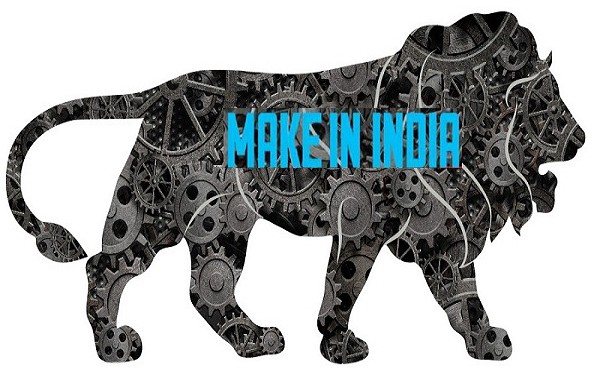
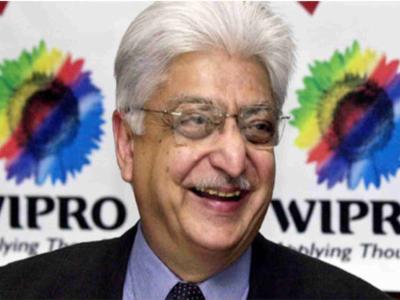
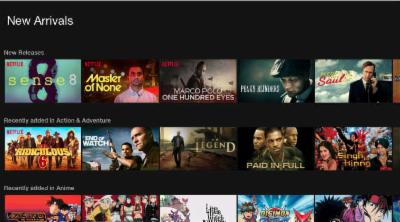
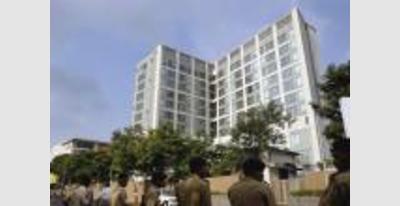
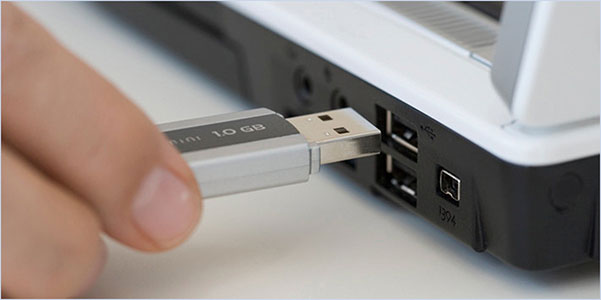
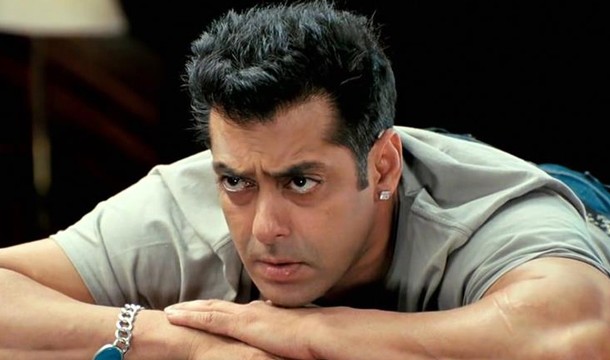
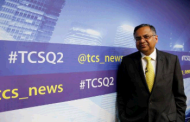
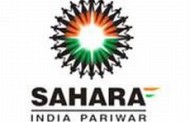
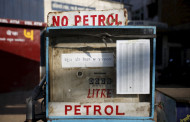
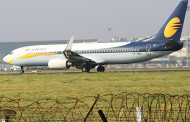



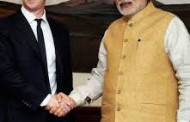
![Online [Free Watch] Full Movie The Mountain Between Us (2017)](http://www.realnewsofindia.com/wp-content/uploads/2015/09/375787-inflation-190x122.jpg)








Recent Comments